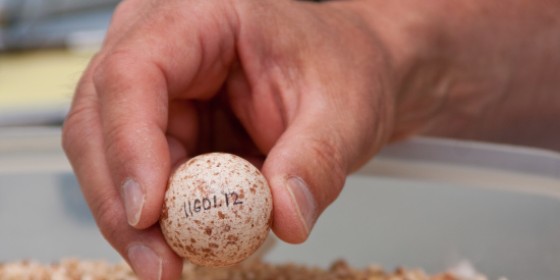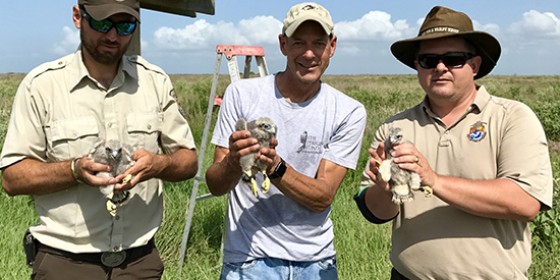After an absence of at least forty years, a stable Aplomado Falcon population thrives along the Gulf Coast thanks to our breeding and release program, in partnership with landowners and collaborators. So why is this falcon still on the U.S. Endangered Species List?
Unlike Peregrine Falcons that range across a variety of habitats, Aplomado Falcons depend on wide-open grasslands with mature yucca plants for nesting, ample migrating birds as prey, and a balance of other predators. Such habitat is scarce.
Threats to Aplomado Falcons

Paul Spurling

Brian Mutch

Overgrown brush is an enemy of healthy grasslands because it crowds out yucca, the falcons’ preferred nesting plants, and harbors predators like Great Horned Owls. Brush removal is difficult and expensive, but the benefits for falcons and other species are significant. We now advise agencies on grassland restoration and are seeking private landowners who can commit to the same actions. Our priority is restoring areas with recently-abandoned Aplomado territories, or occupied territories where brush is beginning to encroach.
To offset a lack of yucca plants, we erected dozens of barred nesting platforms. Pairs using them raise as many young as pairs in yucca nests, and twice as many as pairs nesting on brush or the ground!
Our advanced computer analysis, the “Aplo-model,” confirms that our approach is working: reproduction along the Texas Gulf coast is ample to sustain a growing population in suitable habitat. Despite damage from Hurricane Harvey, the Aplomado Falcon is still on its way to reaching the de-listing goal of 60 pairs.
How will we continue to grow the population? Expanding habitat is key. Although the Aplomado is a medium-sized falcon, it requires a relatively large area to nest and raise young. Roughly a third of the population and its habitat still lacks formal protection, and rapid development in the Lower Rio Grande Valley could pose a threat. Fortunately, we’ve spent decades stitching together a patchwork of private lands, public parks, and wildlife refuges. So far we have enrolled 2.25 million acres within the falcon's historical range, with a fraction currently suitable for Aplomado Falcons.
This species’ recovery plan was first drafted in 1990. We'll continue meeting with partners to share the latest knowledge and refine our plans for the future.






